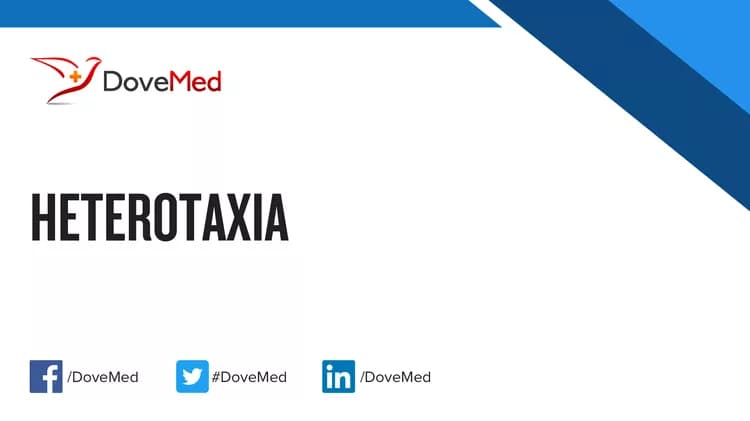The topic Heterotaxia you are seeking is a synonym, or alternative name, or is closely related to the medical condition Heterotaxy Syndrome.
Quick Summary:
- Heterotaxy Syndrome is defined as the abnormal arrangement of organs inside the chest and abdomen of an individual
- The term is derived from the Greek language, in which “hetero” means ‘other than’ and “taxis” translates to ‘arrangement’. Thus, the name of the condition signifies “other than normal arrangement”
- Approximately, 3% of all congenital heart defects are reported to occur as a result of Heterotaxy Syndrome. The condition is more common among the Asian, African-American, and Hispanic populations
- In most cases, the syndrome develops sporadically, with no family history of the condition. In about 10% of cases, those with Heterotaxy Syndrome may have an immediate family member with the disorder. In addition, exposure to environmental toxins has also been reported to cause the syndrome
- Mutation(s) in over 60 genes have been described in individuals with the syndrome, which may be inherited in an autosomal dominant, autosomal recessive, or X-linked manner
- The symptoms of Heterotaxy Syndrome may include the absence of spleen, heart defects, breathing difficulties, and issues with digestion. Generally, a diagnosis of the condition is made through imaging of internal organs to identify abnormalities
- The treatment is determined by the organ affected and extent of malformation. The treatment of Heterotaxy Syndrome may include medications and/or surgery to correct malformations
- The prognosis of Heterotaxy Syndrome is dictated by the severity of malformations. Typically, those diagnosed before birth or in early childhood have poorer outcomes than those who are diagnosed with the condition into adulthood
Please find comprehensive information on Heterotaxy Syndrome regarding definition, distribution, risk factors, causes, signs & symptoms, diagnosis, complications, treatment, prevention, prognosis, and additional useful information HERE.
Related Articles
Test Your Knowledge
Asked by users
Related Centers
Related Specialties
Related Physicians
Related Procedures
Related Resources
Join DoveHubs
and connect with fellow professionals


0 Comments
Please log in to post a comment.